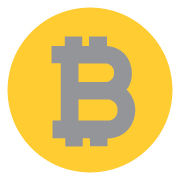Breaking down popular cryptocurrencies
April 25, 2018
The first iteration of a product is hardly ever perfect. Bitcoin, the first iteration of a cryptocurrency, is no exception.
The hundreds of other currencies all have their selling points and improvements. There is no perfect coin, so it’s up to the consumer to choose what they believe is practical.
While almost all cryptocurrencies are based on the technology and idea of bitcoin, each one paves a new path.
Because cryptocurrencies are fairly easy to create, there are some coins that were created by unconventional means.
For example, a Reddit community by the name of GBDS, which follows the development of a game called Garlic Bread Dating Simulator, created a coin called GarlicCoin. It advertises its “pretty fast” transaction times and the fact that it is open-source, meaning anyone is able to look at the code and suggest changes to it.
Most coins have their own websites, so researching any coin is fairly easy.
Four of the most popular currencies are bitcoin, ethereum, Ripple, and dash. All of these have their strengths and weakness. Here’s a breakdown of those currencies:
Bitcoin (BTC)
Bitcoin was the first cryptocurrency to come out, beginning in 2009, as well as the first use of blockchain technology.
The coin saw great climbs in value, jumping from its initial value of $0.008 in 2009 to a high of $19,783 in 2017. The coin itself has a market cap of 21 million bitcoin, which is written in the cryptocurrency’s code. This means no additional coins can be produced after 21 million bitcoin are reached.
The coin’s ability to conceal a user’s identity has led to its adoption in dark web illegal transactions, which has attracted government concern about the nature of the currency prompting conversations of potential regulation.
This, however, hasn’t led to any actual regulation of the coin. Bitcoin uses a system called Proof of Work, which requires miners to confirm each transaction that occurs along the blockchain.
This system is known to be inefficient and time consuming leading to long transaction times, which require a lot of computing power. As an incentive for miners to process a transaction, users are able to pay a higher fee with the excess money going into the wallets of a miner.
Ripple (XRP)
Ripple emphasizes that it uses real-time global payments. The creators envision its uses to be mostly for banks and as a payment provider.
Ripple as a payment provider would allow individuals to use it as a sort of international currency due to its fast payments and low exchange fees.
Ripple aims to solve the problem of international trade by allowing individuals and businesses alike to quickly trade currency for goods. The system today has international fees and settlement times of about three to five days. Using Ripple, there is about four seconds in between payment and receipt.
Currently, Ripple is close to the value of the U.S. dollar, about 90 cents. This can make transactions easier than bitcoin for example, where payment with bitcoin is usually in the thousandths of a bitcoin.
Ripple also boasts the fact it is backed by banks. Whether this is a good or a bad thing is up to the consumer, but it differentiates it from many other cryptocurrencies.
One of the main selling points of cryptocurrencies are that they are decentralized, but this means that Ripple is actually controlled in part by banks and “Ripple Labs.”
Ethereum (ETH)
The main differences between ethereum and other cryptocurrencies are very slight. Besides the technical differences, such as ethereum using a different language and security methods, there are a few differences that affect the everyday users.
Ethereum has some similar strengths with bitcoin.
The two are both decentralized, and both rely on mining to create new coin and reward people to use it. Ethereum was never meant to be a replacement for currency as bitcoin was, rather an extension.
What this means, is businesses would use ethereum for their transactions.
Examples of this from Investopedia include a system of buying and selling power to “smart grids.” Power can be bought from and sold to the grid in ethereum.
Dash (DASH)
Dash, short for digital cash, is the first decentralized autonomous organization (DAO) that allows for transactions to be placed between users of its peer-to-peer network.
Dash’s initial value was $1.09 in 2014 and has seen a high of $1,474.46 in December of 2017. Based off bitcoin, dash uses the Proof of Work system, but aims to improve on features of the first coin by implementing a two tier system for the confirmation of transactions: the first tier being masternodes (individuals with over 1,000 Dash) and the second tier being miners.
Masternodes are separate from miners as they are also responsible for running and maintaining special servers which include dash’s InstantSend, PrivateSend and Treasury.
Dash masternodes and miners are each awarded 45 percent of the block reward (reward for processing a block) with the remaining 10 percent of the block reward going toward the dash treasury. Dash’s InstantSend and PrivateSend allow for fast and anonymous transactions, which allow for it to behave like a real currency with the added benefit of anonymity.







